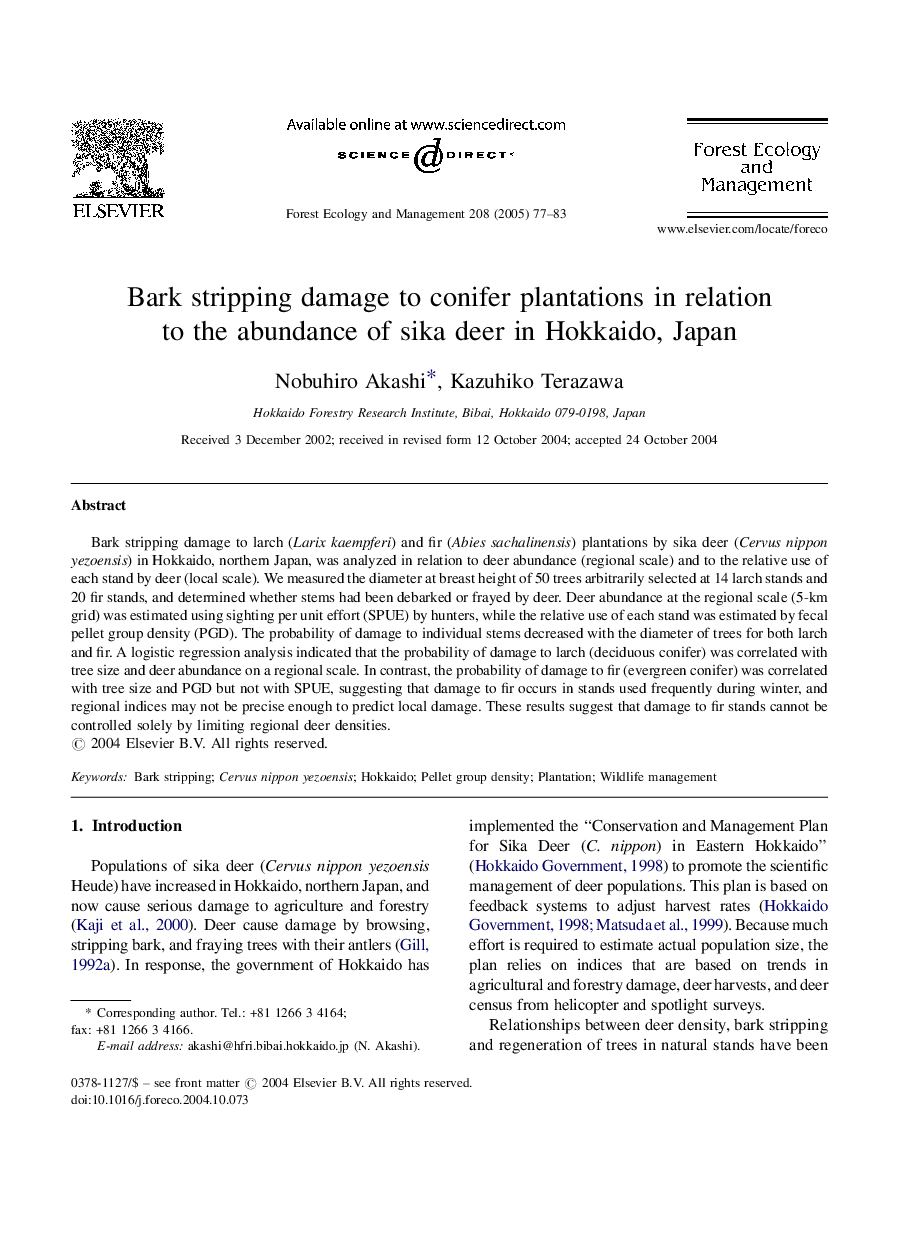| Article ID | Journal | Published Year | Pages | File Type |
|---|---|---|---|---|
| 9620409 | Forest Ecology and Management | 2005 | 7 Pages |
Abstract
Bark stripping damage to larch (Larix kaempferi) and fir (Abies sachalinensis) plantations by sika deer (Cervus nippon yezoensis) in Hokkaido, northern Japan, was analyzed in relation to deer abundance (regional scale) and to the relative use of each stand by deer (local scale). We measured the diameter at breast height of 50 trees arbitrarily selected at 14 larch stands and 20 fir stands, and determined whether stems had been debarked or frayed by deer. Deer abundance at the regional scale (5-km grid) was estimated using sighting per unit effort (SPUE) by hunters, while the relative use of each stand was estimated by fecal pellet group density (PGD). The probability of damage to individual stems decreased with the diameter of trees for both larch and fir. A logistic regression analysis indicated that the probability of damage to larch (deciduous conifer) was correlated with tree size and deer abundance on a regional scale. In contrast, the probability of damage to fir (evergreen conifer) was correlated with tree size and PGD but not with SPUE, suggesting that damage to fir occurs in stands used frequently during winter, and regional indices may not be precise enough to predict local damage. These results suggest that damage to fir stands cannot be controlled solely by limiting regional deer densities.
Related Topics
Life Sciences
Agricultural and Biological Sciences
Ecology, Evolution, Behavior and Systematics
Authors
Nobuhiro Akashi, Kazuhiko Terazawa,
